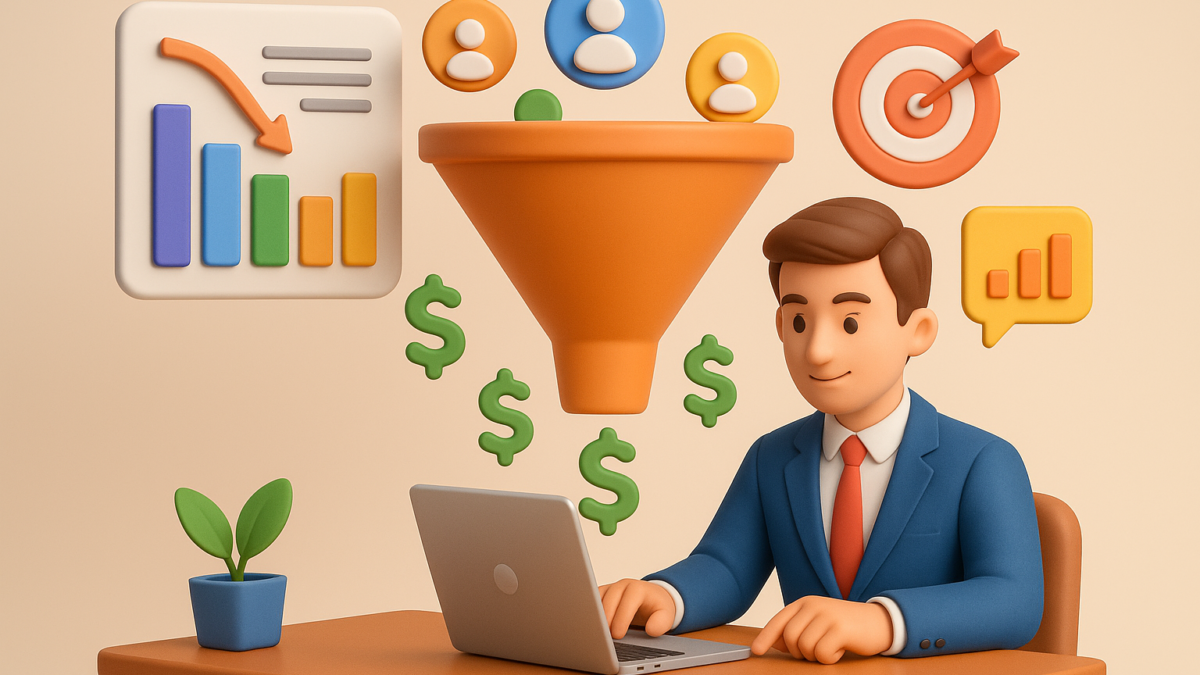Lead Generation in 2025: Strategies That Actually Convert
Generating high-quality leads has become more challenging—but also more impactful—than ever. With rising digital noise, evolving customer behavior, and AI-driven marketing, businesses must rethink how they attract and convert prospects. Lead generation in 2025 isn’t just about filling your pipeline; it’s about building real intent, real connections, and real conversion opportunities.
In this blog, we break down the most effective lead generation strategies, step-by-step processes, tools to use, and insights backed by industry trends. Whether you’re a startup or an enterprise, these frameworks will help you create scalable, predictable, and high-converting lead funnels.
Why Lead Generation Still Matters in 2025
Despite automation and AI advances, businesses still face three major challenges:
- Quality vs Quantity → More leads don’t always mean more sales.
- Longer buying cycles → Especially in B2B, customer journeys span months.
- Content saturation → With so much content online, standing out is tougher.
A strong lead generation engine helps brands stay relevant, discover qualified prospects, and maintain consistent revenue flow.
1. Understand Your Ideal Customer Profile (ICP) & Buyer Personas
Before generating leads, you must know who you’re targeting. Brands with a clear ICP see 2.3× higher conversion rates (HubSpot).
How to Define Your ICP:
- Identify your highest-paying customers
- Analyze recurring patterns (industry, region, company size)
- Understand pain points and buying triggers
- Map awareness → consideration → decision behaviors
Tip: Use customer research tools, CRM data, and surveys to build deeper insights.
2. Leverage Content Marketing That Builds Trust
Content is still king, but distribution is the new kingdom. Your content must educate, solve problems, and drive action.
High-Converting Content Formats for 2025:
- SEO blogs targeting bottom-of-funnel search queries
- Webinars featuring industry experts
- Whitepapers & case studies showcasing real results
- AI-personalized email sequences
- Short-form video content (Instagram Reels, LinkedIn, YouTube Shorts)
3. SE0-Driven Lead Capture: Ranking for Buying Intent Keywords
SEO is one of the highest ROI channels for lead generation. It helps you attract warm, active, ready-to-buy audiences.
Examples of buying intent keywords:
- “Best CRM for startups”
- “Lead generation services for SaaS”
- “Top email marketing tools 2025”
Optimize Your Pages For:
- Fast load speed
- Clear CTAs
- Lead magnets
- Structured data & schema
- Internal linking for authority building
4. Build Lead Magnets That Convert
People won’t give you their email “just because.” They need value. Lead magnets are the easiest way to exchange knowledge for contact information.
High-Converting Lead Magnet Ideas:
- Industry reports
- Templates and checklists
- Mini courses
- Free tools or calculators
- Case studies
- Exclusive newsletters
Make sure each lead magnet solves a specific, high-value, niche pain point.
5. Master Email Marketing Automation
Email remains the most powerful lead nurturing tool, returning $42 for every $1 spent (DMA Research).
Best Practices for 2025:
- Use segmentation and personalization
- Set up automated workflows (welcome series, nurture series, reactivation series)
- A/B test subject lines and CTAs
- Use AI to optimize send times and audience clusters
6. Paid Advertising for Immediate Lead Flow
Paid ads help you scale fast and reach high-intent audiences instantly.
Top Paid Channels for Lead Generation:
- Google Search Ads
- Meta Lead Ads (Facebook + Instagram)
- LinkedIn Lead Gen Forms
- YouTube TrueView for Action
- Programmatic Display Ads
Best Practices:
- Use strong offers and value-driven copy
- Create landing pages with no distractions
- Retarget warm website visitors
- Track conversions with UTM parameters
- Continuously optimize based on ROAS and CPL
7. B2B Content Syndication: Expand Your Reach
Content syndication is one of the most underrated lead generation tactics. It allows your content to reach hundreds of publishers, expanding your brand visibility and capturing high-quality, intent-driven leads.
Why It Works:
- Targets senior decision-makers
- Boosts content distribution at scale
- Generates verified B2B leads
- Improves SEO and authority signals
8. Social Selling on LinkedIn, X, and Industry Communities
Social selling is no longer optional. With the rise of community-driven decision-making, buyers engage more with brands that show up, not those that simply advertise.
Social Selling Tips:
- Optimize your LinkedIn profile
- Post value-driven insights daily
- Share case studies and customer wins
- Engage with comments
- Join relevant communities (Slack, Discord, Reddit)
9. Use AI Lead Gen Tools to Save Time & Boost Precision
AI can help automate lead scoring, outreach, workflows, and data cleaning.
Popular Tools for 2025:
- Apollo.io (lead data)
- HubSpot AI (CRM automations)
- Clay (AI-driven prospecting)
- Zoho CRM
- Lemlist (email outreach AI)
AI raises efficiency by 30–50% in most lead funnels (McKinsey).
10. Measure What Matters: Key Metrics for Lead Generation Success
To build a predictable pipeline, track these core metrics:
- Cost per Lead (CPL)
- Marketing Qualified Leads (MQLs)
- Sales Qualified Leads (SQLs)
- Lead-to-customer rate
- Customer Acquisition Cost (CAC)
- Revenue per lead
Data insights help refine your strategy and optimize for sustainable growth.
You May Also Like: From Awareness to Conversion: Using Whitepapers for B2B Lead Generation Success





